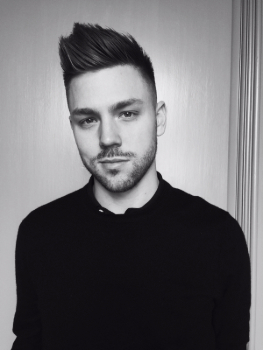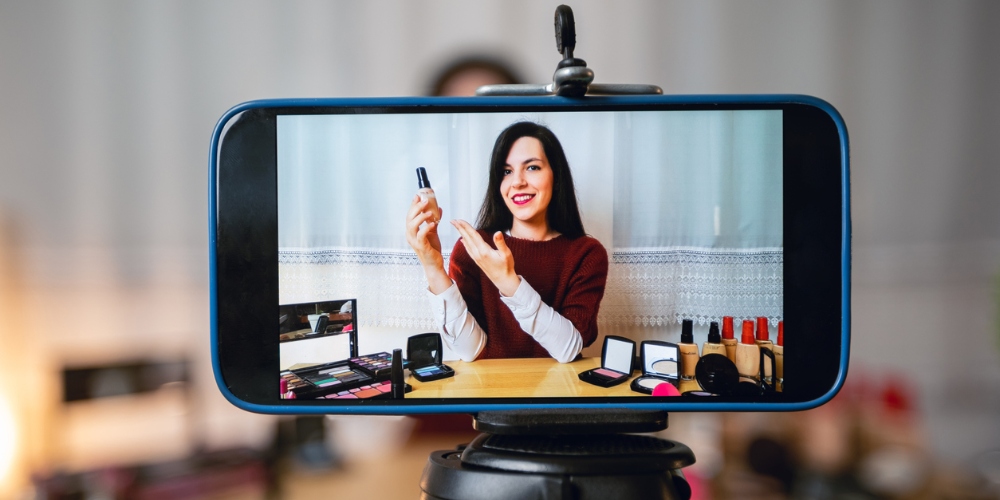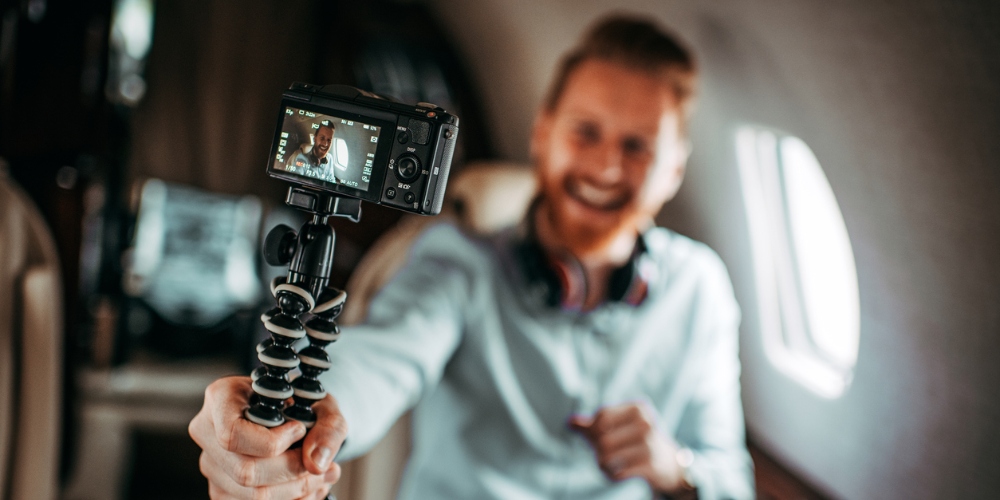
From organic Facebook posts in 2012 to full-blown paid social campaigns in 2019, Edelman’s U.S. Vice President of Influencer Relations and Business Affairs Andrew Schwalb has experienced firsthand the evolution of influencer marketing. Andrew has seen the benefits and challenges of working with celebrities and micro influencers over the course of his career and is ready to share his wisdom with the Perlu influencer marketing podcast listeners.
So kick back, close out of all of those social media apps for a few minutes and tune in to his advice. It just might save your campaign.
Key Takeaways:
- Influencer marketing isn’t just organic Facebook posts and celebrity collaborations anymore. It also includes paid posts across platforms with niche micro influencers.
- It takes time to develop and cultivate relationships with influencers you are already working with, but it’s worth it.
- Choosing whether you should work with celebrities or micro influencers depends on your client’s KPIs, and if budget permits, a blended strategy.
- Influencers and brands – you need to make sure all of your social accounts are integrated on Perlu so agencies can see what you’re working on right now.
- Influencer marketing has grown exponentially in the past five years.
- There are a lot of changes happening to the FTC Regulations, so make sure you stay on top of them.
Interview with Andrew Schwalb
Perlu: Hello and welcome to the Perlu Podcast: Influencer Marketing Reimagined, an influencer marketing podcast where we chat with influencer marketing professionals, social media influencers, bloggers, YouTubers, podcasters – you name it – about what has led to their success. I’m your host, Alexis Trammell.
Today we’re speaking with Andrew Schwalb, the U.S. Vice President of Influencer Relations and Business Affairs at Edelman. He is leading digital and influencer efforts across North America and providing oversight on strategic partnerships, talent buys, negotiations, contracting and business affairs. Andrew educates brands on the digital and influencer space and how to drive integrated campaigns to market. During his influencer marketing career, Andrew has worked with some of America’s top brands, from Calvin Klein, Ford and Marriott, to Ikea and Nickelodeon.
If you like today’s episode, we hope you sign up for Perlu to learn more about how you can grow your influencer marketing career.
Thank you so much for joining us, Andrew.
Andrew Schwalb: Thank you. Happy to be here.
Perlu: How have you seen strategic partnerships with influencers evolve over the years?
Andrew Schwalb: You know, it’s kind of funny, because even separate and apart from Edelman, where I am now, the influencer marketing space, the digital side of it, I think it was around 2012, we would see brands want to work with celebrities, which had most of the numbers on the social media platforms at that time. And really the extent of the services at that time were one-off posts on Facebook, and it was an organic post – no real paid media – and that was the extent of the partnership. And at that time – the algorithms are different these days – but at least over 50% of a person’s following was seeing their posts. And so you could do an organic one-off post and that was the extent of your campaign.

And now fast forward to what we’re seeing these days. You’re seeing top-tier influencers partner with brands to make exclusive product lines. There are launch parties, exclusive drops, all those kinds of fun things. And it’s awesome to be able to see this, that we went from a kind of a one-off splash to being able to create different product lines with influential people, and the fans are loving it.
But you know, from an Edelman perspective, we started on the YouTube video side where we would create a YouTube video with a client product, or any sort of different type of mission that a client was trying to get out in the marketplace. And since then, we really believe in a very cohesive strategy with multiple different touchpoints. So not just a video, but we would like to do an SMT media day, we would like to do a dinner, we’re going to be doing social media content, and then we’re wrapping that all up with earned media outreach, and then we also have paid media behind it.
So as you can tell, it’s gotten a lot more strategic in the way that we hit the market, paid, earned, owned type of media out there.
Perlu: Absolutely. And when you take this holistic approach, how do you measure success?
How can you know whether it was the paid media, the earned media, or the influencers themselves that really drove the success? Or do you just attribute it to the entire program?
Andrew Schwalb: Well, we look at the different components that you actually just brought up. And so by the time we get down to a wrap report for our client, we look at the different places where we spent the money. And so if it was organically on an influencer, we know that we yielded these types of results. And we’re asking influencers these days to help us understand how well their content did. And so things like the insights data on Instagram posts – we really need to have screenshots of that data if they are not authenticated them to our network to where we’re already seeing that data. We take, for instance, that kind of data.

So we take the organic mixed with how well we did on paid and then also with the earned to give a snapshot for our client about how we did. And then from there it’s all based on the KPI that the client wanted. I mean, some clients merely want click-throughs, they want to make sure that they got eyeballs onto a certain page. Or it could be they want people in-store. And so from there it’s a very different strategy where we would hire maybe more regional micro influencers or even nano influencers to generate very localized market interest. So it really depends. But essentially we look at every single facet of that holistic campaign and we wrap it up together and give our clients a very accurate screenshot of what exactly happened.
Perlu: Awesome. That’s cool. You and I have talked a little bit about how important it is to establish and cultivate real relationships with influencer partners. Even though this takes a lot of time and energy and relationship building, at scale it just sounds daunting, especially to new brands.
Could you explain the benefits of this approach to listeners and the cost-benefit analysis of true influencer partnerships?
Andrew Schwalb: Yeah, for sure. You know, it really kind of boils down to time. The whole business, and especially from our end from a PR company, is really based on how much time we’re spending. And what I’ve found out specifically on what our company sees is the extra time that we take to develop and cultivate the relationships through the people we’re working with has really become part of the success that we’ve had. Because the more that we get to know somebody on a deeper level and know how they work and how quickly they can turn around content – maybe I just only need to give a brief to somebody and they can come back with a fully fleshed-out concept – it’s just way more beneficial for us to enter into another relationship where we know we can trust them.
And that’s kind of the second piece of it: it boils down to time and trust. From a cost perspective, I mean, again, it’s time. It takes a little bit longer to get to know somebody and kind of have a phone call and learn their interests, but the benefit is purely the fact that we end up being able to trust a creator a little bit more.
Don’t Fall Behind. Be an Early Adopter of Perlu.
Schedule a Demo Today!
<As an Influencer> <As a Brand>
I mean, you guys wouldn’t be any stranger to this. You know how many creators there are now in the marketplace. It used to be a very small select group of folks in 2012, and now there are thousands, probably hundreds of thousands of people. And the more that we end up being able to trust somebody, we can trust them when we put them in the hands of our client to create great content and really be a storyteller for our brand. I think it’s definitely worked in the long run for us.
Perlu: Absolutely. I’m glad that you bring that up. So I’m curious,
How does your team choose when you’re going to go with a celebrity and when you’re going to work with micro influencers?
And do you find that those micro influencers are the type of content creators who can take a brief and just turn something wonderful and fleshed out around to you?
Andrew Schwalb: Yeah, that’s a great question. There are so many different nuances between going with a celebrity versus a micro influencer, and a theme that I’ll have throughout this whole discussion is it really just depends on our client’s KPIs. And so going one way or the other is really based on the client’s KPIs. But we would say if budget permits, I would always recommend a blended strategy. So we’re going to have either top-tier influencer or a celebrity, and we’re also going to have micro influencers as well. Because not only does it hit different parts of the market, it hits different considerations for what the client needs.
So you have your massive awareness versus maybe you have the local push. And for some of our clients, that’s part of the strategy. They want to have the nation understand that, hey, we’ve got this new thing, but we also want you to go into the store and buy it. We also want you to go in this door and think about it. And so we find that we blend them.

But when it comes to creation, typically what I would say is that your influencer in general, and especially the micro influencers, got their start by being either a little bit different or creating great content on their own. And so we really like working with influencers and micro influencers because a lot of times we can give them a sandbox to play in, and they bring us something back really awesome.
The difference with hiring maybe a celebrity only is that we would typically want to have a little bit of production behind it just to ensure that the polished asset comes out exactly like we want it. So it kind of changes the overall campaign when we have to bring in a celebrity because we want to ensure that we can help bring out the best creative. It’s not to say either one’s better than the other; once you get into the fact that you want to hire somebody like that, you want to make sure that the content is the prettiest that it can be in the market.
Perlu: Definitely.
What are some of the struggles you’ve encountered when trying to find the right content creators within influencer marketing communities?
Andrew Schwalb: You know, back when there were just databases, and there still are, but a lot of the technology solutions early on were just built as a visual database, and you type in the word travel or something, and they would come out with a whole bunch of different people who could be classified as travel influencer. But there wasn’t really enough or wasn’t a lot of soul to it other than it was a place that you could identify people. But it wasn’t something that proved why you would want to work with them.
And so that little extra context, again, is why it makes sense to develop those deeper relationships. Well, that’s part of the reason why. It’s harder to trust and to want to put somebody in front of our brands if we didn’t know anything about them. And so we’d have to go and still do our research and go back and review three to six months’ worth of content to ensure that they’d be the right person to put in front of our client.
But really it was finding people that could create the content we are looking for and not have to go through multiple rounds and really just be great people, great storytellers, for our client.
Perlu: Awesome.

What is your best advice for an influencer who wants to work with an agency like Edelman long-term?
Andrew Schwalb: Yeah, this is a great question. What we really like to hear and know from people is some of the great stuff that they’ve been working on separate from any of the partnerships we’ve done with them. We always like to know separate sponsored campaigns, or whether they’d be interested in a certain cause and they’re creating content for it. We’d like to be kept in the know about the cool things that people are doing.
It’s a thing where you have a contact through us, through someone like your platform, or they know some of the people that work at the company, but we like to see the different types of partnerships that they’re working on. Again, it allows us to know how they are working in the marketplace and what they could do if we were going to hire them.
But I would say that from there, another one that’s kind of come up lately and that we’re really following is just a general willingness to be more transparent about what’s going on behind the curtains. I brought this up earlier – things like insights data. Again, if the influencer is not already authenticated into our network, we’re really making sure that we know the true performance of the posts – and this is across all platforms – to make sure that we’re actually hitting the right people to make sure the audience is lining up with what we need for our client.
Looking to Work with Reliable Professionals in Influencer Marketing?
Working with Edelman, one thing that will always come up is that we will want to know audience data, insights data and other things to make sure that we are casting the right sort of talent and influencers for our client.
Perlu: Awesome, awesome. I’m so glad you mentioned that. Perlu members, please take note. You need to make sure that all of your accounts are integrated on Perlu so that these agencies have context in what you’re working on right now. That’s awesome. Thank you for mentioning that.
Andrew Schwalb: Of course.
Perlu: We surveyed some of our Perlu members and we got quite a few questions back for what we’d like to ask you during this interview. One of the most common questions was
How do you recommend the influencers determine what to charge brands for campaigns?
Andrew Schwalb: Yeah, this is a great question, and we get asked this a lot in a lot of different settings. And I like it because I hope that it’s being brought up so that all parties can price on a fair basis, because we see a lot of numbers that are given to us that don’t really have a reason behind them. And we don’t want to accuse anybody or anything of that sort, but if somebody comes to us and tells us it’s $5,000 per post, we need to know why you feel that way.
And we break it down when we speak to our clients in two different ways. There’s an art side of the approach, and there’s a science part of the approach. And from the science part, really all we mean are simple equations for a baseline. And it’s not anything that we use, it’s not like this plus this equals this number and that’s the rate. There’s so much more to it. But from a general sense, what we look at is engagement. We look at the certain types of engagements that are going on. You know, our clients are going to want to use their marketing dollars and spend it towards actual engagement. And so we will look at various platforms with some kind of proprietary knowledge in the amount of deals that we’ve done.

Let’s say it’s on YouTube, and let’s say the V30 on YouTube is X number, and we are in this type of industry, then the baseline could be this cost per engagement (CPE). However that does not account for the art side of the equation, which is how long are we asking for a talent to be exclusive for? Who’s owning the content? Where is that content going to be used? Is it only on social media? Only digital channels? Is it going to be shared at events? You know, where does that content really go? Is there going to be paid media behind it? You have all of these separate types of considerations that there is no equation for all of those things we just spoke about. The exclusivity, and the paid media use, and all of those fun things. And so what we ended up doing is we have basically some analysis towards a lot of the past deals we’ve done, and we use them towards creating what is a fair price.
So in general, to boil it down, we’d look at engagement rates to ensure that the cost for engagement falls in a specific range that we feel comfortable in. And then from there, we do that across all platforms, whether it be a blog post, so we want to know the unique monthly views. If it’s YouTube, we’re going to look at the average viewership of each video over the course of three months. Those kinds of fun things.
And then another way we’ll look at it, it goes back to what I brought up before, the insights data. Like on an Instagram post, for instance. So what’s the average impressions and the average engagement and the average reach that’s happening per post over the course of the last three months. We will ask for that data to ensure that we are paying what’s fair in order to enter into a partnership together.
Perlu: Awesome. Yeah, totally makes a lot of sense.
Could you tell us about a time when an influencer marketing program had a particularly excellent return on your investments?
 Andrew Schwalb: Yeah, of course. I’ve got a couple of different ones. I’m not able to share the client names, but I can definitely share a lot of the success behind it. We had a technology company where we were really starting to experiment with TikTok. TikTok is fun, and a lot of people are expanding over to TikTok and trying it out. And I heard some sort of success metric from them that stated that our campaign that we did in the spring was to date the most effective and the highest viewed branded campaign on the platform to date. And that’s coming from TikTok.
Andrew Schwalb: Yeah, of course. I’ve got a couple of different ones. I’m not able to share the client names, but I can definitely share a lot of the success behind it. We had a technology company where we were really starting to experiment with TikTok. TikTok is fun, and a lot of people are expanding over to TikTok and trying it out. And I heard some sort of success metric from them that stated that our campaign that we did in the spring was to date the most effective and the highest viewed branded campaign on the platform to date. And that’s coming from TikTok.
Perlu: Wow.
Andrew Schwalb: And so, as you can imagine, our client was very, very happy about that. The amount of views and the amount of talent that we had. There was an event part of the experience involved, a lot of user-generated content (UGC). I mean, in our opinion, when you start getting fans to create something as well, we see a lot of great performance.
Which kind of leads me into my second example. So we had another campaign that was probably about a year ago at this point, where we had creators and we give them a sandbox to play in, like I’ve alluded to before, and they were artists, and they were influencers, and they were creators. What we did is gave them a brief and then basically called for their fans to also get the brief as well, download it and then create based off of what is being asked.
And the end of this campaign, we had I think it was over 12,000 briefs that were downloaded. The success in the campaign – of actually new subscriptions – paid for itself and more.
Perlu: Wow.
Andrew Schwalb: And then we also had 25 earned media placements secured for top-tier media. It was a very successful campaign for us. And I think when we look back on it, not only can you see it in the numbers and the engagements, which we’re obviously very focused on to ensure that all of our content that we create for our client drives action… It was a UGC play, that we find that UGC done well can just start a movement. And when you get people engaging and getting fans to create like the influencers themselves, it just creates a very positive environment for people to work off each other, and it further spreads that message.
Perlu: That is so cool. Wow. User-generated content making it viral. That’s amazing.
What are some common misconceptions you’ve noticed clients have regarding influencer marketing programs?
Andrew Schwalb: Yeah, we see this a lot. And this is even with clients who are seasoned in influencer marketing. It’s really the length of setup time with these programs. And what I mean by that is it’s not necessarily the time from selling an idea to getting the paperwork signed; it’s more from casting the right talent and influencers. That’s really what we’re alluding to. It’s something where we, and I personally, don’t like to cast a quick group of people without really understanding more about them. And so that phase, sometimes the research and identification takes a little bit longer than I think clients would like to know or like to have to wait on. But typically we see the results at the end when we have great content, or like we just discussed, things like UGC. We see it come out at the end in the results.

But a really large one for us is that casting the right people and doing the outreach itself sometimes can take a lot longer than clients expect. And you know, if a client’s looking to get content in market three weeks from now, that’s obviously very tough for us to do. And we absolutely will get it done, but we spend a lot of time in that casting period that could catch clients off guard.
And then other things such as production costs usually catch them off guard. Rising influencer cost – we’ve noticed over the last five years or so. Prices have fluctuated and are all over the place. Sometimes campaigns, if they worked with us three years ago, will be more expensive for the same type purely because the amount that talent are demanding has increased. So that’s a huge consideration.
And then I’d say probably the last thing for our clients is it’s become very pay-to-play as far as getting eyeballs on content, and purely organic posts don’t work as well as they used to. As we’ve touched on, you’ve got to run some paid media behind the content in order to really make sure that that message pops. Now knowing that we must have a layer of paid media under every single organic post, I think it’s something a little bit newer. It’s not anything that really catches people off guard, but I think a lot of times knowing that you can’t solely rely on organic anymore catches some people by surprise.
But anyway, those are some of the things that we’re seeing from our side.
Perlu: Yeah. Wait, so you’re trying to tell me that you don’t know every single influencer that exists in this world right now?
Andrew Schwalb: No. No, I wish I did. We’d be even better at identifying talent. But we try our best. Not only do you try and discover and know influencers, and know that there are some really great people and you want to continue working with them, we also want to learn and know even newer people we didn’t know about before.
And that’s one thing that’s been very crazy in this industry, that you kind of knew the players in the space, and then it just exponentially grew. And there’ll be people still today that I’ll lookup. Someone’s like, have you heard of so-and-so? No, I haven’t. And I’ll look them up and they have a crazy following, they’re really engaged, their fans are really engaged, and their content is beautiful. And I think one thing I want to say is that we always love to find those new partnerships, and we’re never not discovering.
So funny you bring that up. I wish I knew quite a lot more than I did, but it’s very hard to keep up.
Perlu: Yeah, absolutely. And it’s funny that you mentioned the fact that there were fewer players back in 2012, and then now, today, you see the rise in cost of influencer marketing. And it’s most likely because these influencers, they’re growing their careers and they’re networking. They’re growing their audiences, engaging more and more every day, and you’re discovering a new influencer every day. So that makes a lot of sense.
Andrew Schwalb: Yeah.
Perlu: That’s something you always think about.
Where do you foresee influencer marketing going in 2020?
Andrew Schwalb: Yeah, this is a fun question, and we’re actually working on the digital trends report that we put out for Edelman every year. And I can share a few things right now that I think a lot of people would probably agree on. And again, we have a full report coming, but one of the first things that it came up in 2018 for sure – and it’s been a consideration all throughout this year for us specifically I think it’s going to continue to get even deeper – is really authenticity, transparency and the whole kind of fake follower discussion. That’s a very, very large consideration for us as we source talent.

The goal here for us is to hire storytellers. We want to hire people whose interests align with our client’s interests, and you can always tell it when it comes out in the content. And so I think as more brands start to spend more money in this space, and there’s more and more influencers, there’s just going to be a deeper focus on the authenticity behind the content and the person itself that’s being created, and really taking the health of the audience that follows those talent and influencers. And so that’s definitely one of the larger things that is going to continue to be a consideration in a lot of people’s minds.
Another thing we’re starting to see is influencers are casting a wider net into different content mediums. And what I mean by that is we’re seeing influencers that maybe were YouTubers starting to experiment with Twitch, or Mixer or podcasts for instance, and even things like TikTok. And Instagram, as we all know, has really come out dominant as far as not only the platform that a lot of sponsored posts are happening on but just people predominantly use Instagram as a social media platform. But I think we’re starting to see different types of content mediums influencers will experiment with, and a lot of it has to do with the fact that video and live content is really taking precedence right now.
Collaborate with Influencers Across Social Media Platforms
Static photo content, there’s nothing wrong with it at all, but I think that the way that people are viewing content these days – how quickly we’re scrolling through content and we see something and move on – photos are not becoming as great of a storytelling device. And so we’re seeing a lot of video content; we’re seeing a lot of live content. Which again, live content is interesting because it’s actually a little bit more authentic when it comes to the content because it’s not as edited and dolled up. But we’re definitely seeing those kinds of things.
And then the third thing, which isn’t necessarily a fun topic, but we really take pride in following and understanding the rules here, but we’re seeing a lot of stuff happening with data privacy and just general compliance type of activities that are happening, and so there are different laws changing in California soon, and really making sure that when we’re working together with talent and influencers that we really understand how we’re exchanging private data and how it should be handled. And not only are we doing that, I think the industry is going to initially take an eye to that and make sure that these companies are telling the influencers and the brands how exactly we’re using each other’s information, and to make sure that everybody’s safe and private.
Those are three things that we’re seeing. But again, we’ve got a full report coming out.
Perlu: Awesome. Excited to see it. I hope you send that our way.
Andrew Schwalb: Absolutely.
Perlu: Well, thank you so much, Andrew, for joining us today. It was such a pleasure hearing from you on behalf of Edelman.
Andrew Schwalb: Yeah, of course. Again, happy to be here. We love, again, speaking out to the market and talking with all things related to influencers, and I’m glad to spend the time with you guys.
Perlu: Great. Thank you so much. And thank you to everyone listening. We hope you enjoyed hearing from Andrew Schwalb, the U.S. Vice President of Influencer Relations and Business Affairs at Edelman.
If you like our show and are interested in what it takes to succeed in influencer marketing, check out our blog at blog.perlu.com for more podcasts and blog posts. And sign up for Perlu at perlu.com to meet, mingle, connect, collaborate and grow your career.
We hope you’ll join us for our next installation of the Perlu Podcast: Influencer Marketing Reimagined.

